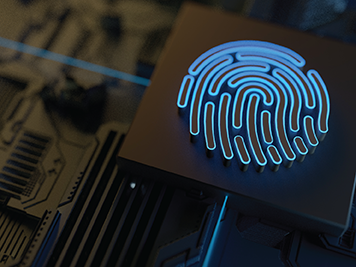Artificial intelligence (AI) is transforming how HR teams work by streamlining processes and making daily tasks more efficient. However, some malicious actors are using this same technology to breach organizations and their networks. These tactics have become more common with the rise of generative AI and are often combined with social engineering to exploit vulnerabilities in companies.
Cyber threats from fake job applications
One of the biggest threats today is cybercriminals using social engineering and generative AI to create convincing fake applicants. They can produce fake IDs, false employment histories, and use advanced techniques to give believable answers during interviews. This trend poses serious risks to organizations, especially as remote work becomes more common.
As face-to-face interactions become less common, the risk of fraudulent candidates increases. Some of the most concerning cases involve applicants linked to foreign actors, including North Korea, who pose as remote candidates to access U.S. companies. These imposters use professional interview techniques and rely on underground networks to pass background checks and other verification processes. Their goal is to secure remote positions that give them access to corporate networks and sensitive information.
Once hired, these fake employees can misuse their positions to install malware, steal consumer data, access trade secrets, or commit financial fraud. The potential damage is significant, leading to financial losses and compromising the integrity of the organization’s data and systems.
As AI changes how companies find and hire talent, we must approach these tools with both optimism and caution. The benefits of AI are clear, but so are the risks when it’s used with bad intentions. Today, even the smoothest hiring process can be exploited by those looking to cause harm.
Strengthening cybersecurity practices
To address rising cybersecurity risks, businesses should focus on building strong training programs and encourage collaboration between HR and IT. A solid partnership between these teams helps manage data and tech risks, improving prevention and response to cyber threats. HR and IT should simulate phishing threats to educate employees on cybersecurity best practices and keep them updated on emerging concerns.
Once a training program is in place, businesses can take proactive steps to reduce security and privacy risks. To address the issue of fake applicants, companies should use a comprehensive strategy that includes thorough background checks and a standardized application process.
Conducting thorough background checks, like verifying employment history, education, and references, can help identify potential fraud. Third-party services can enhance this process. Additionally, implementing applicant tracking systems (ATS) can filter out suspicious applications based on specific criteria or red flags.
Creating a standardized application form that asks for detailed information makes it tougher for fake applicants to provide convincing details. Behavioral interview techniques encourage candidates to share specific examples from their past, helping to uncover inconsistencies in their stories.
Reviewing candidates' social media profiles and online presence can help verify their professional background and authenticity. Businesses should use relevant skills assessments or tests instead of relying solely on resumes to truly assess their abilities. Finally, clear and detailed job descriptions can attract genuine candidates and deter those who don’t meet the qualifications.
Key steps for incident response
Even with preventive measures, mistakes can happen. That’s why having a strong security and privacy incident response plan is essential.
When a cybersecurity incident is detected, immediate action is essential. This includes isolating affected systems, disabling compromised accounts, and blocking malicious traffic to prevent further damage. Next, conduct a thorough investigation to understand the incident's scope and nature. Analyzing logs, network traffic, and other relevant data helps you determine how the breach occurred, what vulnerabilities were exploited, and what data may have been compromised.
Clear communication with stakeholders, employees, customers, and partners is crucial. It’s also important to consult with legal counsel to understand your legal obligations related to the breach and ensure compliance with data protection laws like GDPR and HIPAA.
After containing the breach, take steps to fix the vulnerabilities. This may include applying patches, updating software, changing passwords, and improving security controls. Finally, conduct a post-incident review to assess the response and identify lessons learned.
Finally, investing in advanced cybersecurity solutions—like least privilege access and zero trust architecture, intrusion detection systems, and endpoint protection—along with regular backups of critical data and clear recovery procedures, will help you quickly restore operations if an incident occurs.
We offer a wide array of resources through our Cyber Resiliency Network. Discover our cyber solutions and see how your company could be at risk by taking our Cyber Readiness Assessment.



